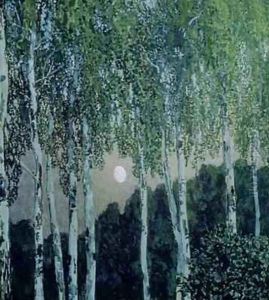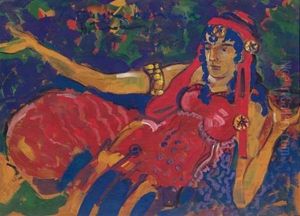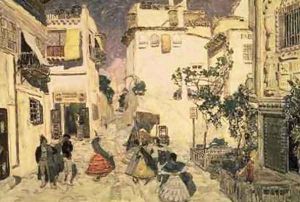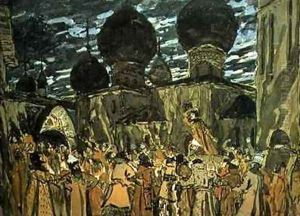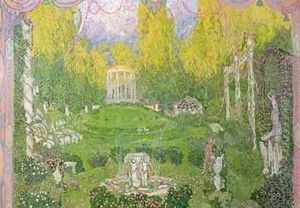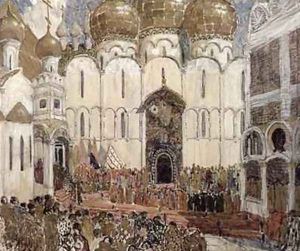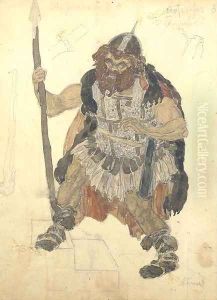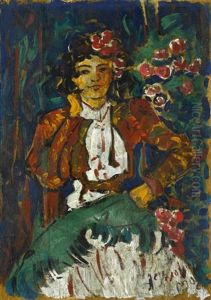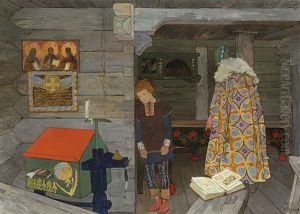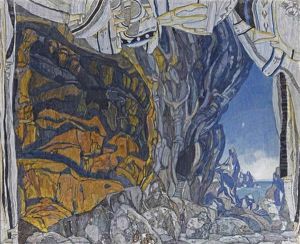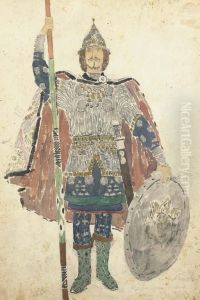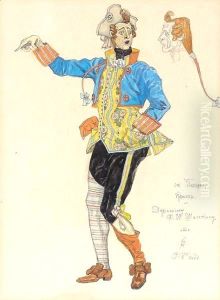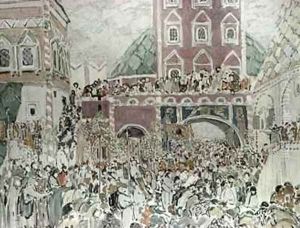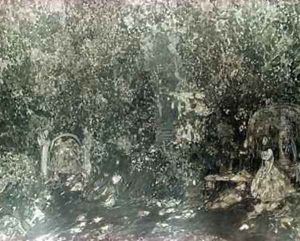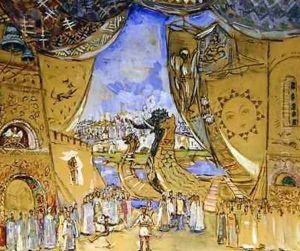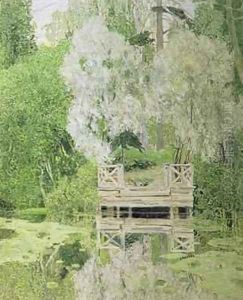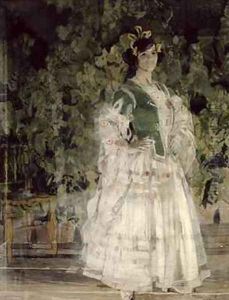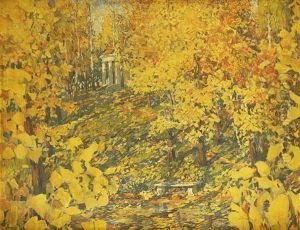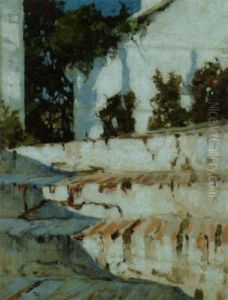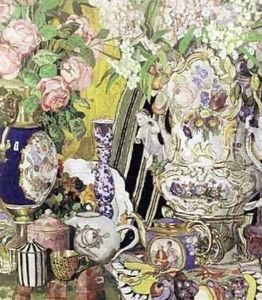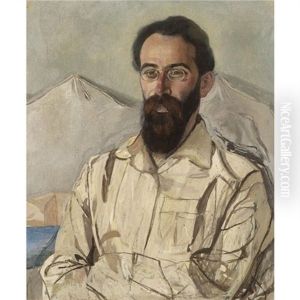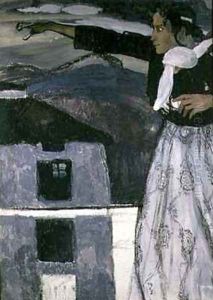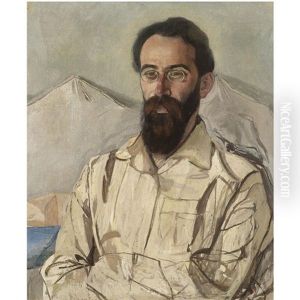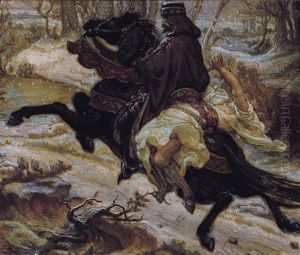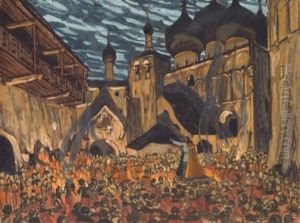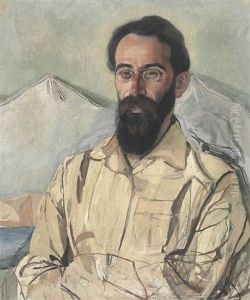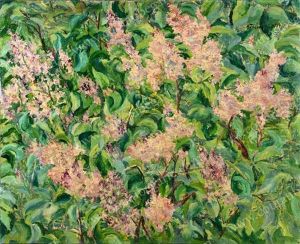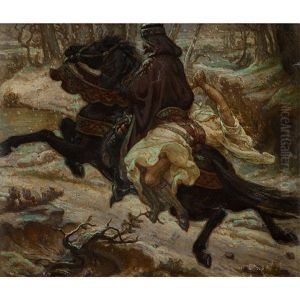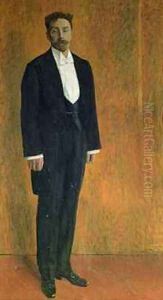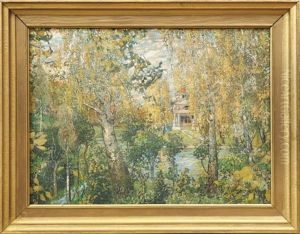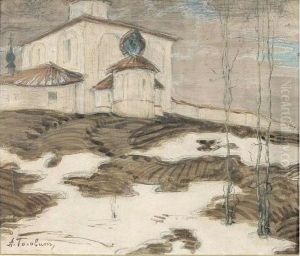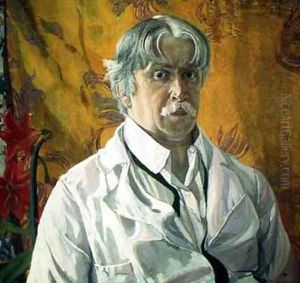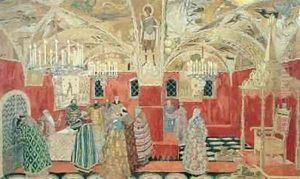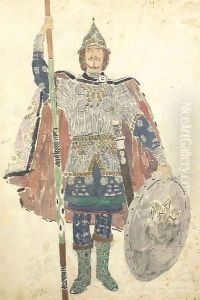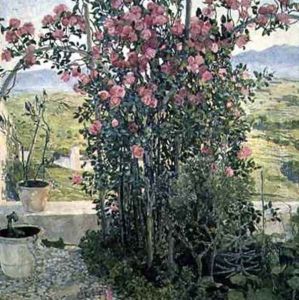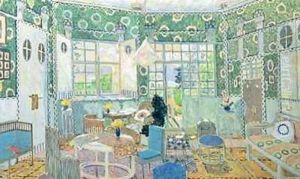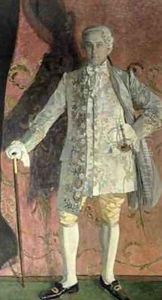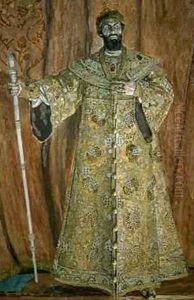Aleksandr Jakovlevic Golovin Paintings
Aleksandr Jakovlevic Golovin was a distinguished Russian artist, architect, and designer, associated with the Mir Iskusstva (World of Art) movement. Born on March 1, 1863, in Moscow, Russia, Golovin was influential in several artistic domains, including theater set design, painting, and illustration. Golovin's early education began in his home city where he developed an interest in the arts. He later studied at the Moscow School of Painting, Sculpture and Architecture and at the St. Petersburg Academy of Arts, where he was mentored by renowned artists of his time.
Golovin's artistic career was multifaceted. In the 1890s, he became involved with the Mir Iskusstva, an artistic movement that sought to break away from the academic restrictions of the time and embraced a more stylized and decorative approach to art. Golovin's work with the movement allowed him to explore his interests in graphic design, book illustration, and set design. His illustrations for Russian fairy tales and other literary works are particularly notable for their vivid detail and imaginative compositions.
One of Golovin's most significant contributions to art was in the field of theater set and costume design. He worked closely with famous theatrical directors like Konstantin Stanislavski and Vsevolod Meyerhold. Golovin's sets were known for their fantastical elements and ability to create a cohesive visual experience that complemented the dramatic narratives of the plays. His designs for the 1902 production of Rimsky-Korsakov's opera 'Ruslan and Lyudmila' at the Mariinsky Theatre in St. Petersburg brought him widespread acclaim.
Throughout his career, Golovin also executed architectural projects and interior designs, applying his artistic vision to the built environment. His approach to design often featured a harmonious blend of Russian artistic traditions with contemporary European styles.
Golovin's work was cut short by his deteriorating health in the late 1920s. He passed away on April 17, 1930, leaving behind a rich legacy that had a lasting influence on Russian art, particularly in the realm of theatrical design. His ability to seamlessly integrate various forms of art and design has made him a celebrated figure in the history of Russian culture.
